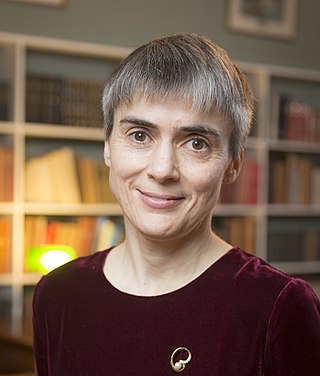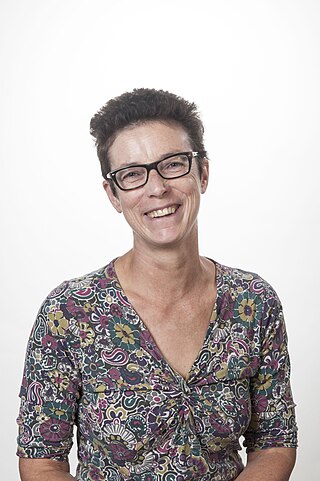Related Research Articles

Arabidopsis thaliana, the thale cress, mouse-ear cress or arabidopsis, is a small plant from the mustard family (Brassicaceae), native to Eurasia and Africa. Commonly found along the shoulders of roads and in disturbed land, it is generally considered a weed.

The John Innes Centre (JIC), located in Norwich, Norfolk, England, is an independent centre for research and training in plant and microbial science founded in 1910. It is a registered charity grant-aided by the Biotechnology and Biological Sciences Research Council (BBSRC), the European Research Council (ERC) and the Bill and Melinda Gates Foundation and is a member of the Norwich Research Park.

Sir John Edward Sulston was a British biologist and academic who won the Nobel Prize in Physiology or Medicine for his work on the cell lineage and genome of the worm Caenorhabditis elegans in 2002 with his colleagues Sydney Brenner and Robert Horvitz. He was a leader in human genome research and Chair of the Institute for Science, Ethics and Innovation at the University of Manchester. Sulston was in favour of science in the public interest, such as free public access of scientific information and against the patenting of genes and the privatisation of genetic technologies.

Medicago truncatula, the barrelclover, strong-spined medick, barrel medic, or barrel medick, is a small annual legume native to the Mediterranean region that is used in genomic research. It is a low-growing, clover-like plant 10–60 centimetres (3.9–23.6 in) tall with trifoliate leaves. Each leaflet is rounded, 1–2 centimetres (0.39–0.79 in) long, often with a dark spot in the center. The flowers are yellow, produced singly or in a small inflorescence of two to five together; the fruit is a small, spiny pod.
TILLING is a method in molecular biology that allows directed identification of mutations in a specific gene. TILLING was introduced in 2000, using the model plant Arabidopsis thaliana, and expanded on into other uses and methodologies by a small group of scientists including Luca Comai. TILLING has since been used as a reverse genetics method in other organisms such as zebrafish, maize, wheat, rice, soybean, tomato and lettuce.

The Nottingham Arabidopsis Stock Centre (NASC) provides seed and information resources to the International Arabidopsis Genome Project and the wider research community. It is based in the School of Biosciences at the University of Nottingham's Sutton Bonington Campus, in the English county of Nottinghamshire.

Dame Henrietta Miriam Ottoline Leyser is a British plant biologist and Regius Professor of Botany at the University of Cambridge, Chief Executive Officer of UK Research and Innovation (UKRI) and the Sainsbury Laboratory, Cambridge.

Dame Caroline Dean is a British plant scientist working at the John Innes Centre. She is focused on understanding the molecular controls used by plants to seasonally judge when to flower. She is specifically interested in vernalisation — the acceleration of flowering in plants by exposure to periods of prolonged cold. She has also been on the Life Sciences jury for the Infosys Prize from 2018.
Kirsten Bomblies is an American biological researcher. Her research focuses primarily on species in the Arabidopsis genus, particularly Arabidopsis arenosa. She has studied processes related to speciation and hybrid incompatibility, and currently focuses on the adaptive evolution of meiosis in response to climate and genome change.
The Bateson Lecture is an annual genetics lecture held as a part of the John Innes Symposium since 1972, in honour of the first Director of the John Innes Centre, William Bateson.
Nicholas Paul Harberd is Sibthorpian Professor of Plant Science and former head of the Department of Plant Sciences at the University of Oxford, and Fellow of St John's College, Oxford.

Catherine Rosemary Martin is a Professor of Plant Sciences at the University of East Anglia (UEA) and project leader at the John Innes Centre, Norwich, co-ordinating research into the relationship between diet and health and how crops can be fortified to improve diets and address escalating chronic disease globally.
The Biffen Lecture is a lectureship organised by the John Innes Centre, named after Rowland Biffen.
Michael Webster Bevan is a professor at the John Innes Centre, Norwich, UK.

Steven M. Smith is Professor of Plant Genetics and Biochemistry at the University of Tasmania in Australia, and Visiting Professor in the Chinese Academy of Sciences Institute of Genetics and Developmental Biology, Beijing, China. He is also a chief investigator at the Australian Research Council Centre of Excellence for Plant Success in Nature and Agriculture.
Jane Elizabeth Parker is a British scientist who researches the immune responses of plants at the Max Planck Institute for Plant Breeding Research.
Robert L. Last is a plant biochemical genomicist who studies metabolic processes that protect plants from the environment and produce products important for animal and human nutrition. His research has covered (1) production and breakdown of essential amino acids, (2) the synthesis and protective roles of Vitamin C and Vitamin E (tocopherols) as well as identification of mechanisms that protect photosystem II from damage, and (3) synthesis and biological functions of plant protective specialized metabolites. Four central questions are: (i) how are leaf and seed amino acids levels regulated, (ii.) what mechanisms protect and repair photosystem II from stress-induced damage, (iii.) how do plants produce protective metabolites in their glandular secreting trichomes (iv.) and what are the evolutionary mechanisms that contribute to the tremendous diversity of specialized metabolites that protect plants from insects and pathogens and are used as therapeutic agents.

Anne Elisabeth Osbourn is a professor of biology and group leader at the John Innes Centre, where she investigates plant natural product biosynthesis. She discovered that in the plant genome, the genes involved with biosynthesis organise in clusters. She is also a popular science communicator, poet and is the founder of the Science, Art and Writing (SAW) Initiative. She was elected a member of the National Academy of Sciences in 2022.
Michel Delseny is director of research emeritus at the CNRS and a member of the French Academy of sciences.
References
- ↑ "The Darlington Lecture". John Innes Centre. Retrieved 5 February 2020.
- ↑ "The Darlington Lecture". Archived from the original on 2 November 2013. Retrieved 31 October 2013.